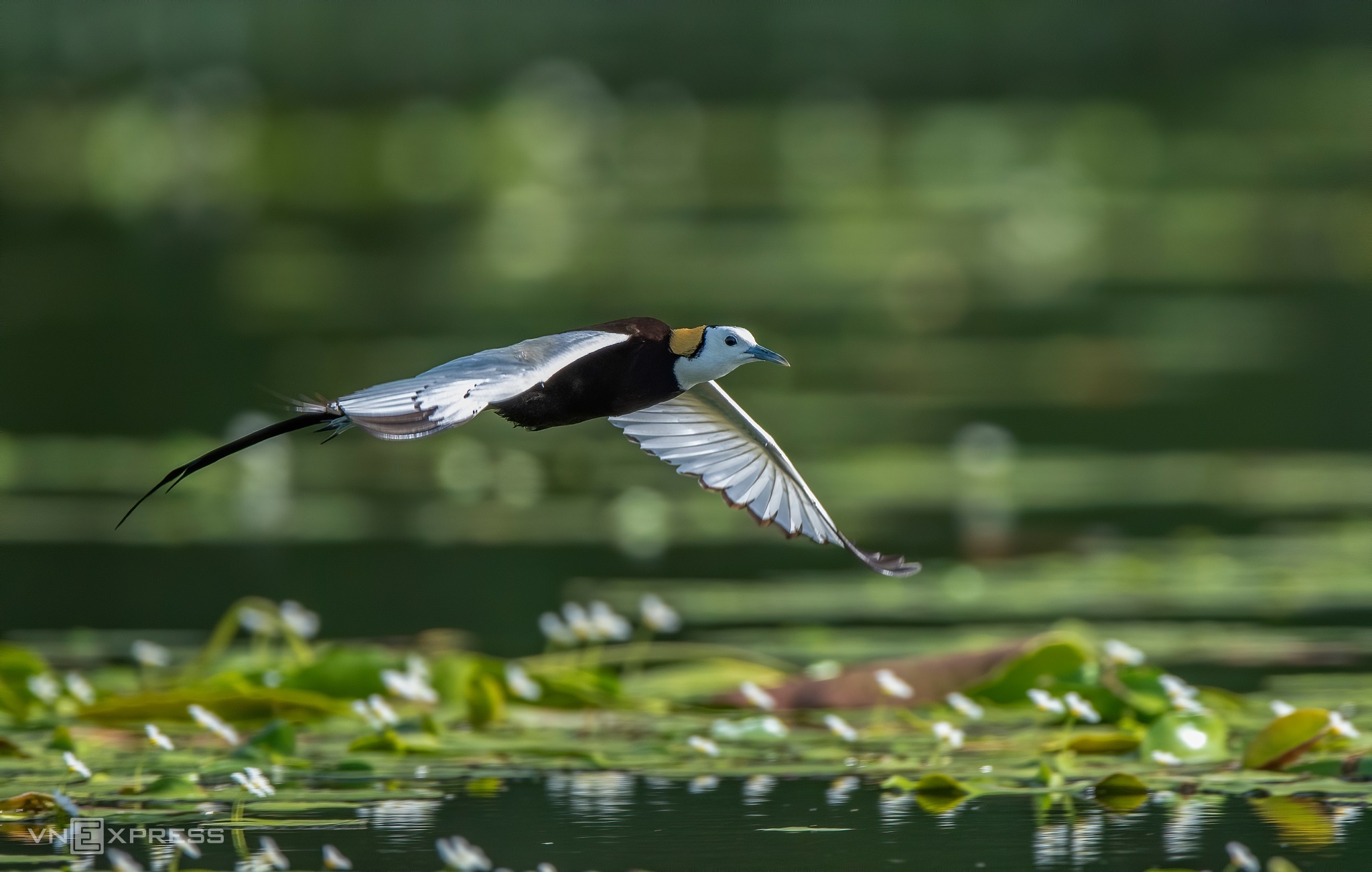
Van Long nature reserve in northern Ninh Binh Province, well known for hosting the world's largest population of Delacour's langurs, is also home to rare bird species.
Van Long nature reserve in northern Ninh Binh Province, well known for hosting the world’s largest population of Delacour's langurs, is also home to rare bird species.
 |
Around 80 kilometers to the south of Hanoi, Van Long Lagoon in Ninh Binh Province, famous for appearing in Hollywood blockbuster "Kong: Skull Island", is surrounded by karst limestone mountains and spectacular caves.
Covering more than 3,000 hectares, it is considered the Red River Delta's wetland nature reserve and home to thousands of terrestrial and aquatic fauna and flora. Among them are rare and endangered species listed in Vietnam’s Red Book such as Delacour's langur.
 |
A flock of Asian openbill storks (Anastomus oscitans) is seen perching on trees by Van Long Lagoon. It is a large wading bird in the stork family Ciconiidae.
This distinctive stork is found mainly in the Indian subcontinent and Southeast Asia. It is greyish or white with glossy black wings and tail. The adults have a gap between their arched upper and recurved lower mandibles.
 |
Northern pintail (Anas acuta) is migratory and usually winters in flooded habitats in northern and central plains, including Van Long lagoon. Both sexes have blue-grey bills and grey legs and feet.
The species feeds by dabbling for plants and adds small invertebrates to its diet during the nesting season.
 |
White-browed crake (Poliolimnas cinereus) feeds on a water lily pond. The species has small, slim-bodied crake with relatively long legs and toes and always scrambles over floating plants and densely vegetated wetlands.
 |
Pheasant-tailed jacana (Hydrophasianus chirurgus) is one of the most impressive birds seen in Van Long lagoon.
During the breeding season, this bird is easily recognized by its long tail feathers. The pheasant-tailed jacana forages by swimming or by walking on aquatic vegetation.
(Source: VNexpress)





